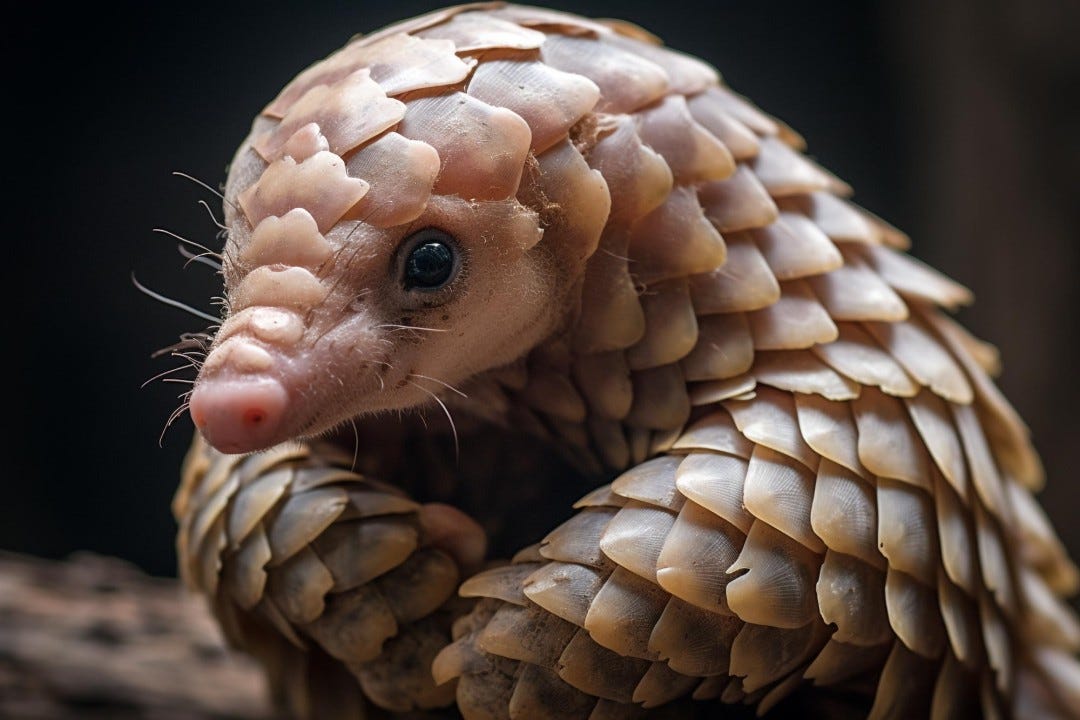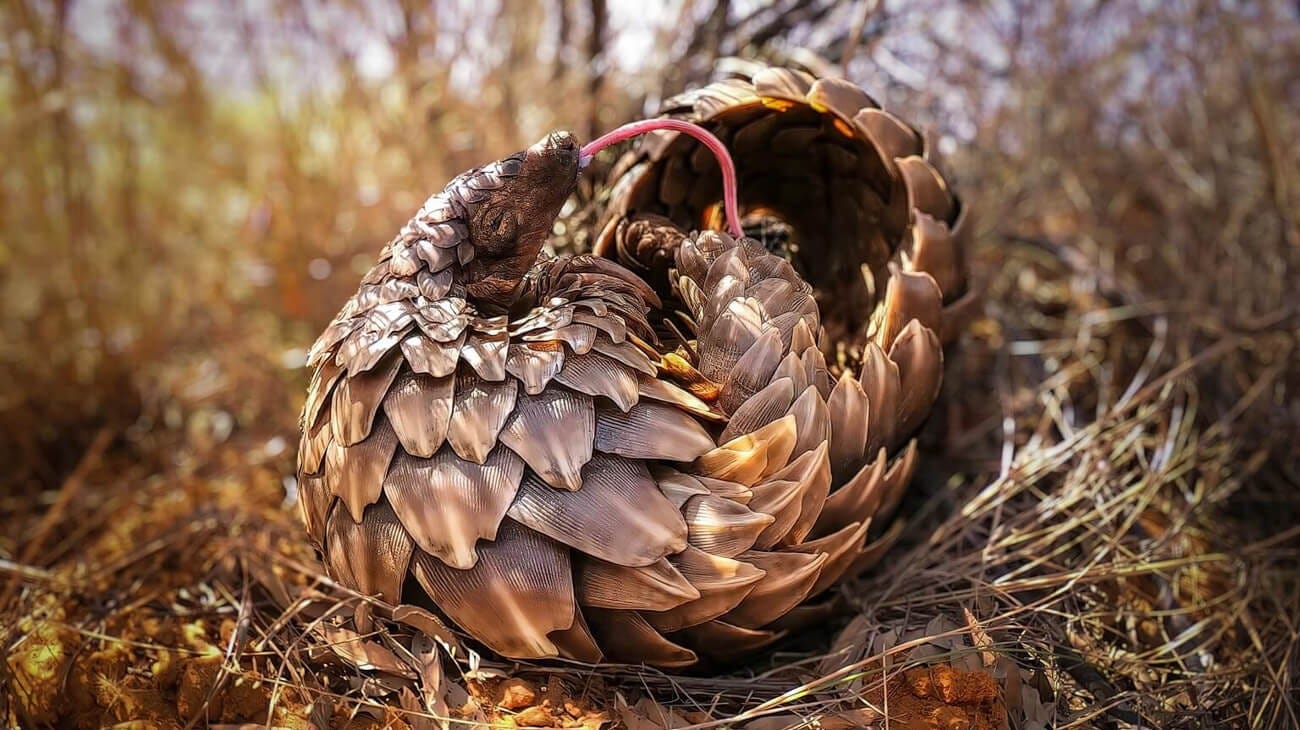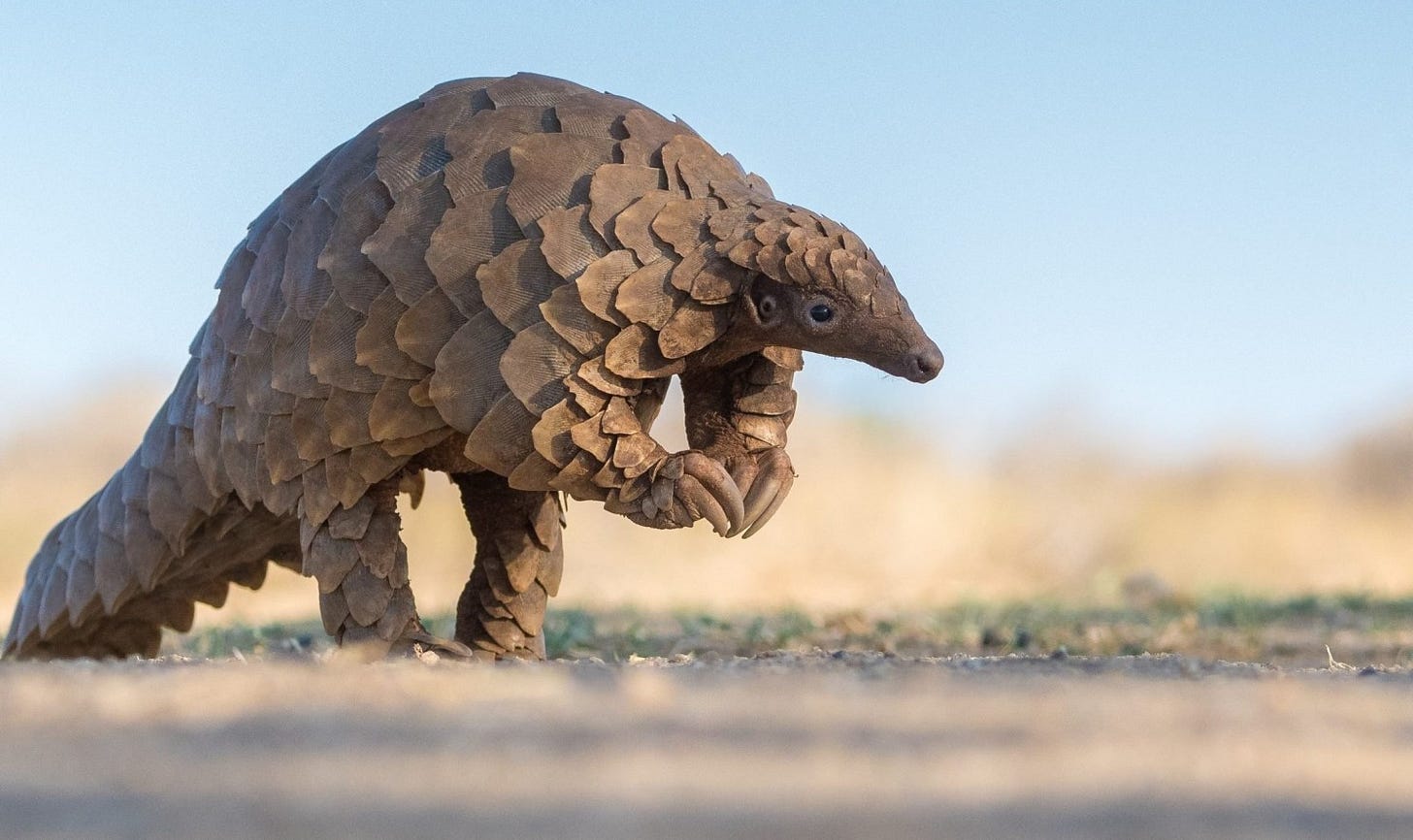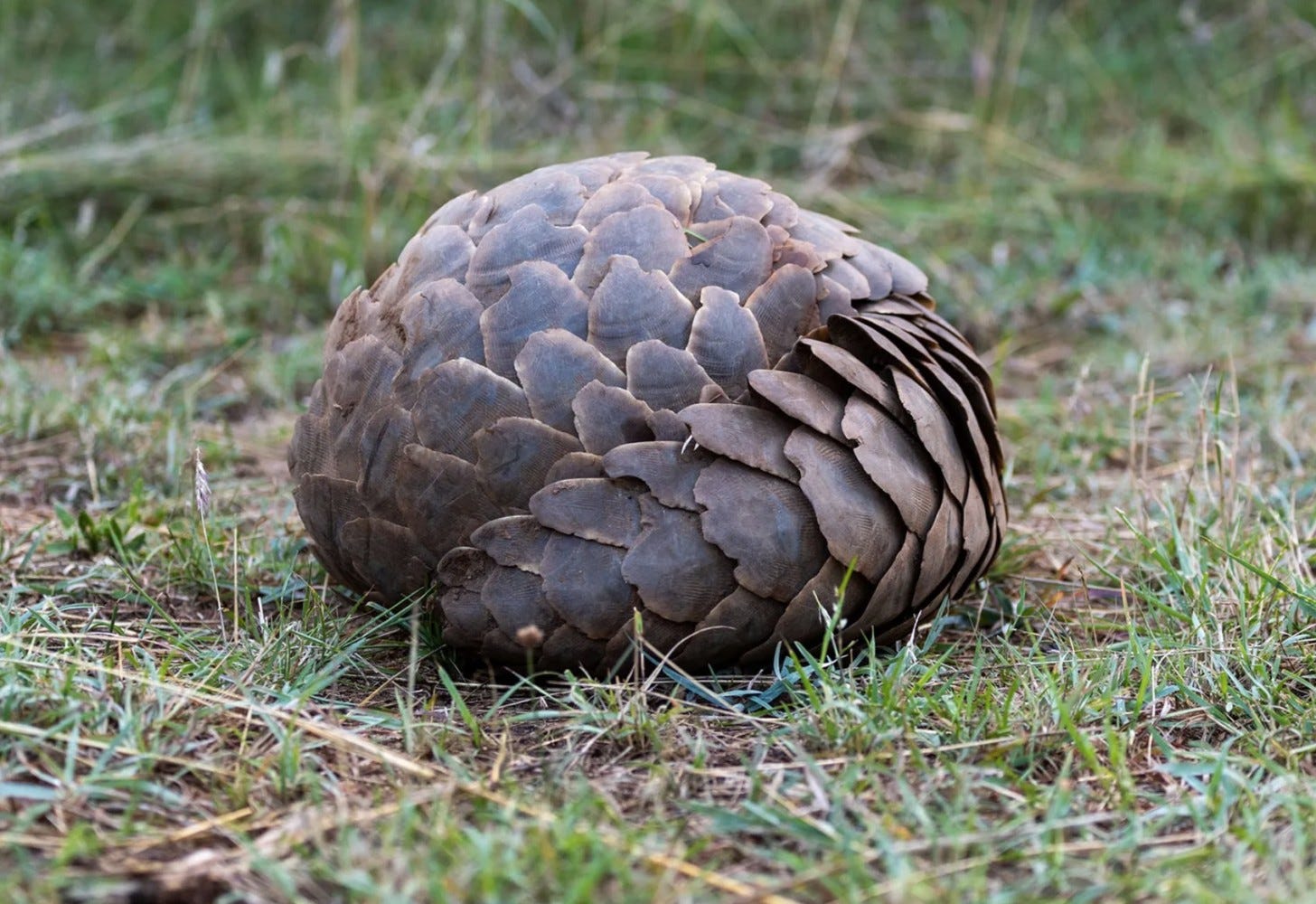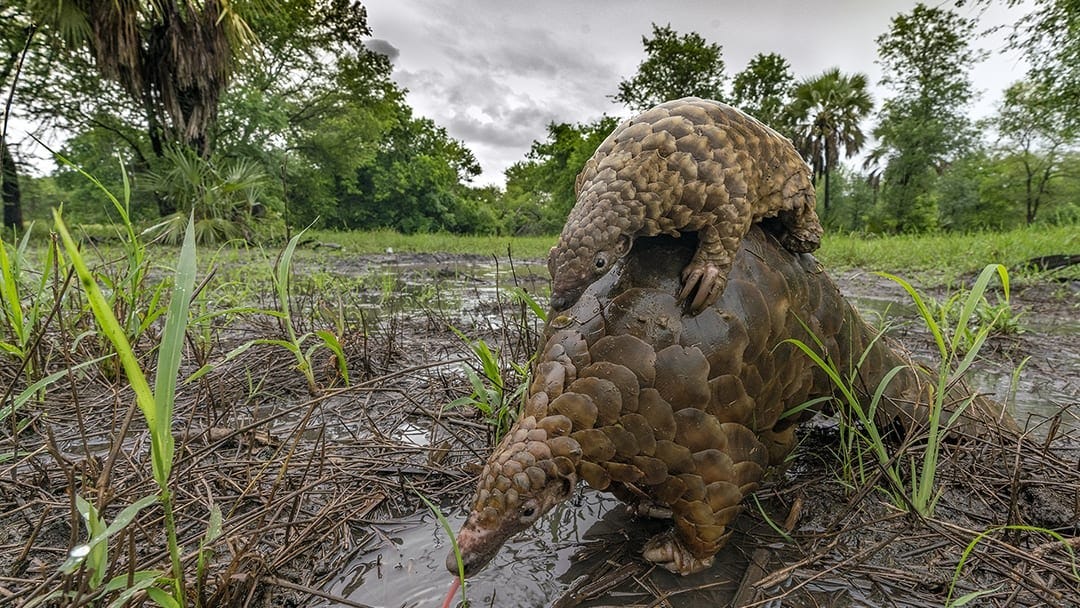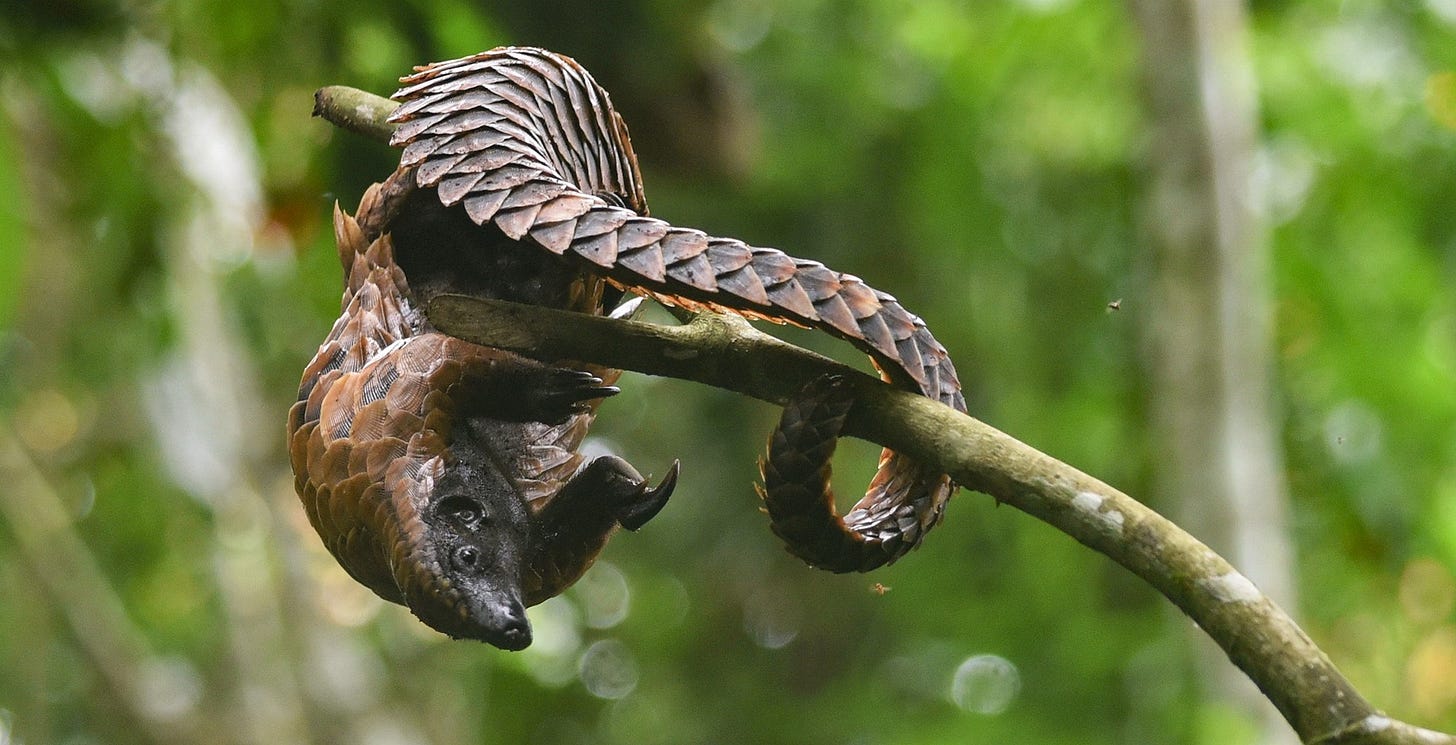I find I'm having a hard time writing about this, because every time I begin, my mind instantly goes to the many human beings around the world involved in hunting (more like collecting, really - more on that later), trafficking, selling, buying and finally consuming parts of this curiously beautiful animal (this, or any other illegally hunted and trafficked animal, of course).
Before we get into the horrific trafficking aspect, here's a bit about the pangolin. While it might give you a bit of a reptilian vibe, it actually is a mammal. At home in parts of Africa and parts of Asia, this creature is sometimes also called a scaly anteater. It eats insects, and that's about it. Mostly ants and termites. Amazingly, the pangolin's tongue can be even longer than its own body length.
The pangolin is slow, doesn't see much, lacks teeth. It is rarely spotted as it mostly roams at night and, during the day, lies asleep curled up away from prying eyes. Under those scales there's flesh, of course - and predators such as lions - if it were not for the human species - would be among their biggest threats. When they walk about, they do so on their hindlegs, looking a bit like miniature Godzillas.
In nature they always have a chance to live to see another day - even with lions. When they hear or smell potential threat, they curl into a tight ball of hard and pointy scales. In addition to their protective orb, they also have a skunk-like defense: by emitting a foul-smelling chemical from their glands, predators think more than twice about even going near them.
What you just read above, makes them the easiest of prey for poachers and illegal traffickers. At the approach of human beings, they do what they always do - they curl up and they simply need to be picked up - and that's that for ...
... an estimated ONE HUNDRED THOUSAND PANGOLINS trafficked to Vietnam and China EVERY SINGLE YEAR.
When you hear about the illegal trade of wildlife, you often hear the outrage about the trafficking of tigers, sharks, elephants, turtles and rhinos. There are more, of course - and on the most trafficked lists you will also find the pangolin these days ... and yet its trade, that insanely vast trade, seems to continue to fly under the radar in the main stream. When you ask most people, they've never even heard the name.
Pangolin, Pangolin, Pangolin!
These days organizations and governments are on alert - but trafficking continues. Over the course of ten years it is estimated that about a million pangolins were killed to supply traffickers. Undercover operatives infiltrate the trafficking networks with sometimes great success ... but as long as the pangolin is so sought after in Vietnam and China, the killing will continue.
The pangolin makes up as much as 20% of all illegal wildlife trade and it is feared that poachers and traffickers are hunting this animal to extinction. Well, economically speaking, it's simply supply and demand ... so what is that demand?
Pangolin meat is considered luxury food in Vietnam and China. It is, so to speak, a status symbol. If you're in a restaurant and you can order pangolin, you're someone, you're clearly on the wealthier side of things. Look at me, look at my dish - pangolin! In traditional Chinese medicine, ground pangolin scales are prescribed for various health conditions. I've also read somewhere that dried pangolin tongue, is carried in one's pocket, is considered a good luck charm.
A National Geographic article informed me that pangolin fetuses are also highly valued. There’s a dish called 'pangolin fetus soup' that's supposed to - as so many other exotic ingredients - enhance a man’s virility. What else have humans thought up in this regard? Here's just a few samples: piranha soup, tiger penis, cobra blood, baboon urine and toad venom. Sometimes, sometimes one cannot help but want to shrink away with concern and downright disgust before the bottomless inventiveness of the human mind.
Pangolins carry their little ones on their back ...
Sloth-like, pangolins can climb and move around up in trees ...
... and our species makes it a point, year after year after year, to traffic and slaughter these marvelous creatures. So, what goes on in people's heads when they pick up a helpless pangolin as it rolls itself into a protective ball?
Poachers/hunters/collectors of pangolins, it is no doubt about making a living. I've read some of those stories and I understand - you have to feed your family. But still, what goes on in your head? When you pick up the first, the second - when you hand them over to whomever pays you? Is it just that incredibly effective compartmentalization mode us human beings possess? It's just a job. It's just a thing. I don't have the luxury to care.
Traffickers, killers, collectors of scales, transporters of live pangolins, too. What goes on in your head? It's a lucrative business. Money? More money? These are criminal organizations. Is it that you can't say anything? That you can't walk away? That you can't find another job? Because I'd venture to say that at this part of the horrific pangolin trade you do have the luxury to chose something else. Why don't you?
Restaurant owners, serving pangolin fetuses ... who are you? Your people spend the morning procuring the ingredients you need for all meals. Do you have to serve pangolin? How do you feel about it? As a chef, how do you feel when you prepare that fetus soup and you see that pangolin baby floating in it? No qualms? Just a job? Again, as a chef, or a waiter, you may not be able to afford a conscience ... but as a restaurant owner? When you have pangolin (or any other trafficked animal) on your menu, do you ever think about it? Do your children know? Do you sleep well? Does it even register?
Finally, as a consumer ... you are, to my mind, among the worst our human species has to offer. You order that meal, you actually enjoy that meal. You might sit in a round, talking about a vacation story, a successful business deal, the wedding of a child ... while chewing on a pangolin fetus.
Sometimes I wonder about the worth of our species. We used to be a part of nature, a long, long time ago. Collectively, we need to get there again. We need nature, all around us. We need to relearn nature, we need to see and touch and feel nature. We need to respect it and we have so much we need to restore.
There, with the work rewilding and restoring, that's where I am hopeful for our species. That's where something is starting to grow - something better - a return to respecting nature, a return to us feeling, truly feeling, that we are a part of it. And a return, hopefully, to respecting ourselves again, too.





